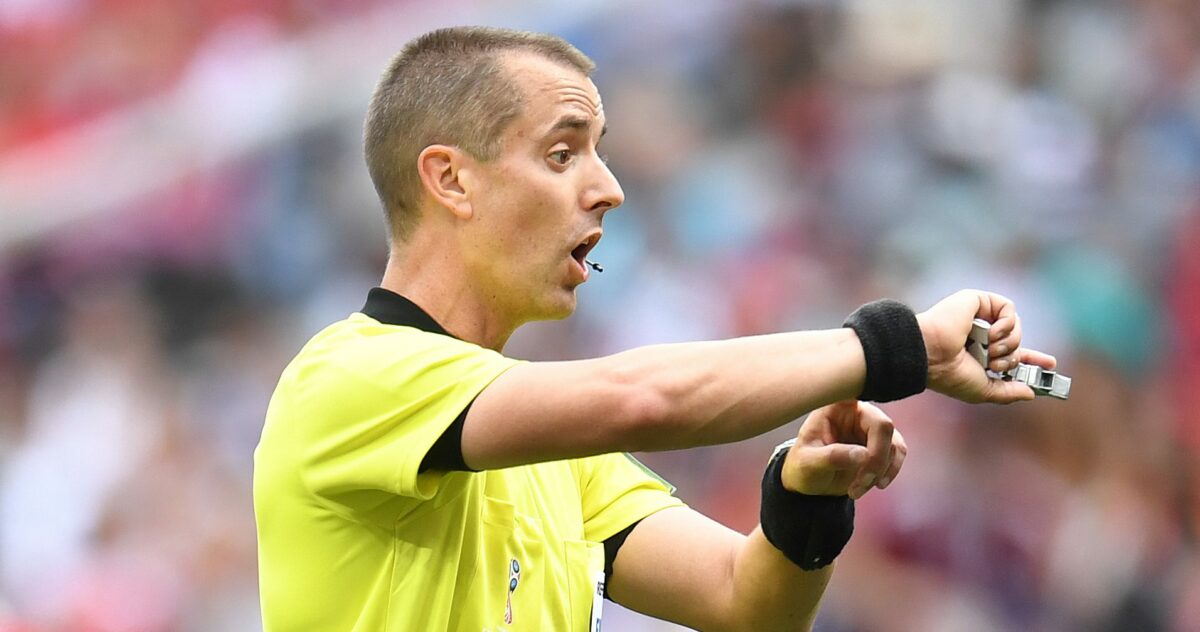The International Football Association Board met earlier this month to discuss several rule changes going into the 2019-20 FIFA calendar year, although, the adaptations to the new rules won’t arrive in Major League Soccer until 2020.
The new implementations include the introduction of yellow and red cards to team officials, players subbing in at the nearest point of the boundary line, and goal kicks and free kicks for defending teams in their own penalty area being considered live as soon as the kick is taken.
The definition of a “handball” is also made clearer, attackers are now forced to give a bit more space to defending walls, goalkeepers only have to keep just one foot on the goal line on penalty kicks, and a new dropped ball procedure.
The most notable changes to the rules are the changes to the points of substitutions, when a handball is called, cards issued to team officials, and goal-kick restarts.
Players no longer have to go to midfield when being substituted, instead, they just step off of the field at the nearest point on the touchline or goal-line. The rule was changed to prevent time-wasting by players taking their time to walk off of the pitch when being subbed out late in games.
“To stop a player who is being substituted ‘wasting’ time by leaving slowly at the halfway line (which is not a Law requirement) the player must leave at the nearest point (as with an injury) unless the referee indicates otherwise, e.g. if the player can leave quickly at the halfway line, there is a safety/security issue or the player leaves on a stretcher,” the IFAB explained in their rule changes summary. “The player must go immediately to the technical area or dressing room to avoid problems with substitutes, spectators, or the match officials. A player who infringes the spirit of this Law should be sanctioned for unsporting behavior, i.e. delaying the restart of play.”
Team officials are now eligible to earn yellow or red cards for misconduct on the sideline.
“The experiment with Yellow Card/Red Card for misconduct by team officials has been successful and has revealed many benefits at all levels, including for young referees dealing with ‘difficult’ adult coaches,” the IFAB explained.
The definition of handballs and its scenarios were given more clarity as well. As explained by the IFAB in an attempt to clarify what’s considered a non-deliberate handball, a “handball” will not be called when the ball touches their own hand or arm directly from their own head body or foot or that of another opponent who is near, if the ball touches the hand or arm in an unnatural position, or falling as the player is trying to break their fall, where the player has not made themselves unnaturally bigger. The IFAB deemed it natural for a player to extend their arms to the ground to break their fall and a handball will not be called if the ball touches their arm if it’s between their body and the ground. Player’s run the risk of a handball being called if the arms are above shoulder height, including when sliding.
Goalkeepers can now handle the ball with their hands on throw-ins or deliberate kicks to them from teammates only if the ‘clearance’ fails. Goals will still not be allowed when the ball touches off of a players’ arm or hand even if accidental and players will still be penalized for a “handball” if they gain a major advantage or a goal-scoring opportunity.
The changes to the rules go into effect in all FIFA-sanctioned matches after June 1, but MLS will wait until the start of the 2020 season to adopt them into the league.

